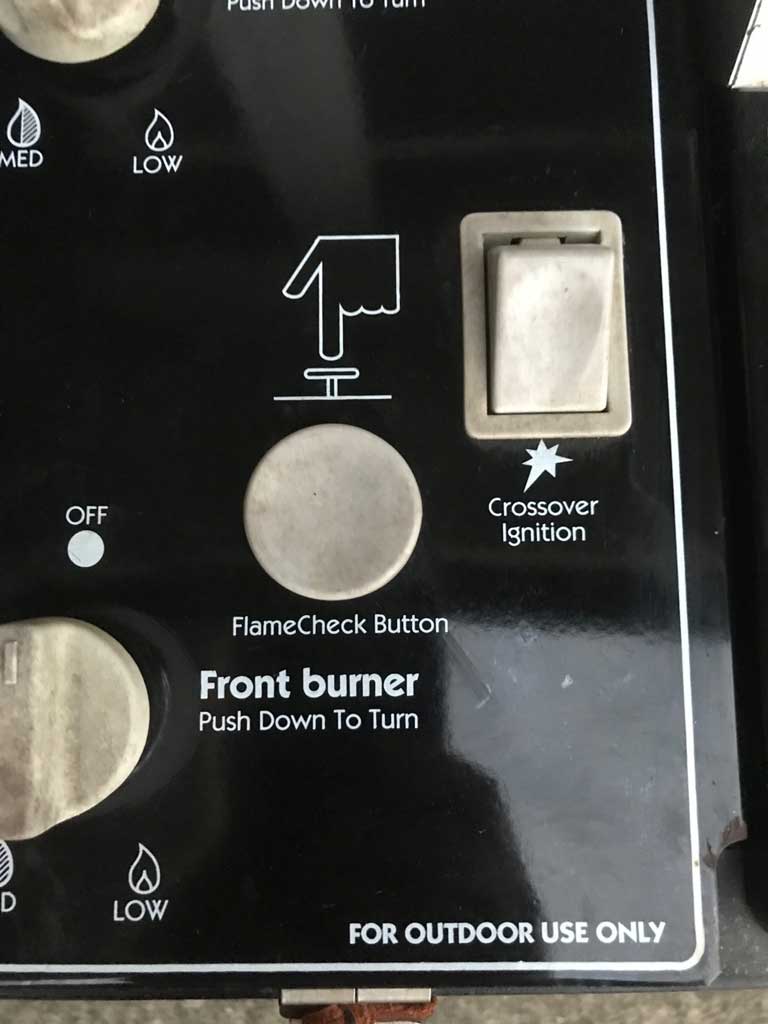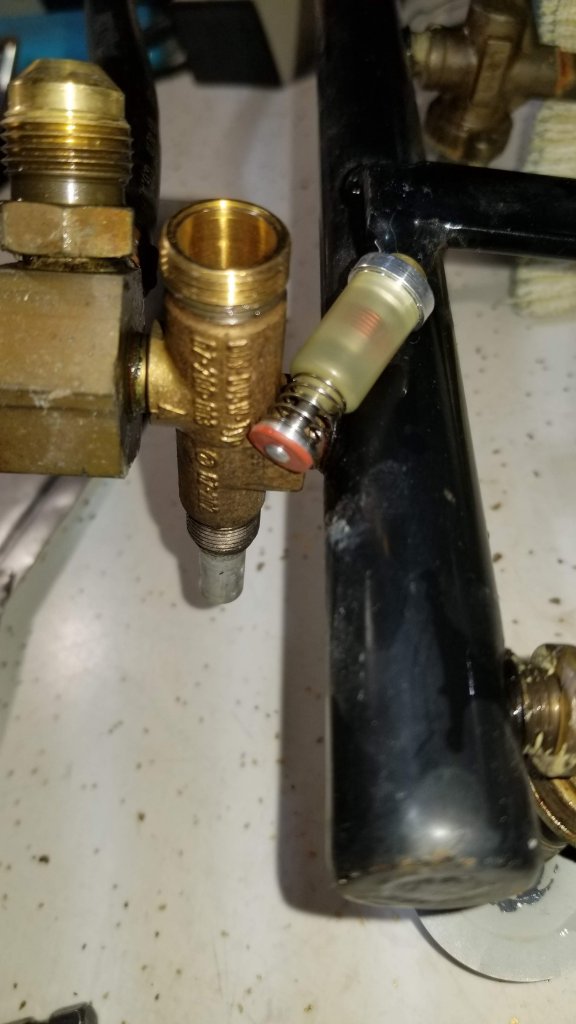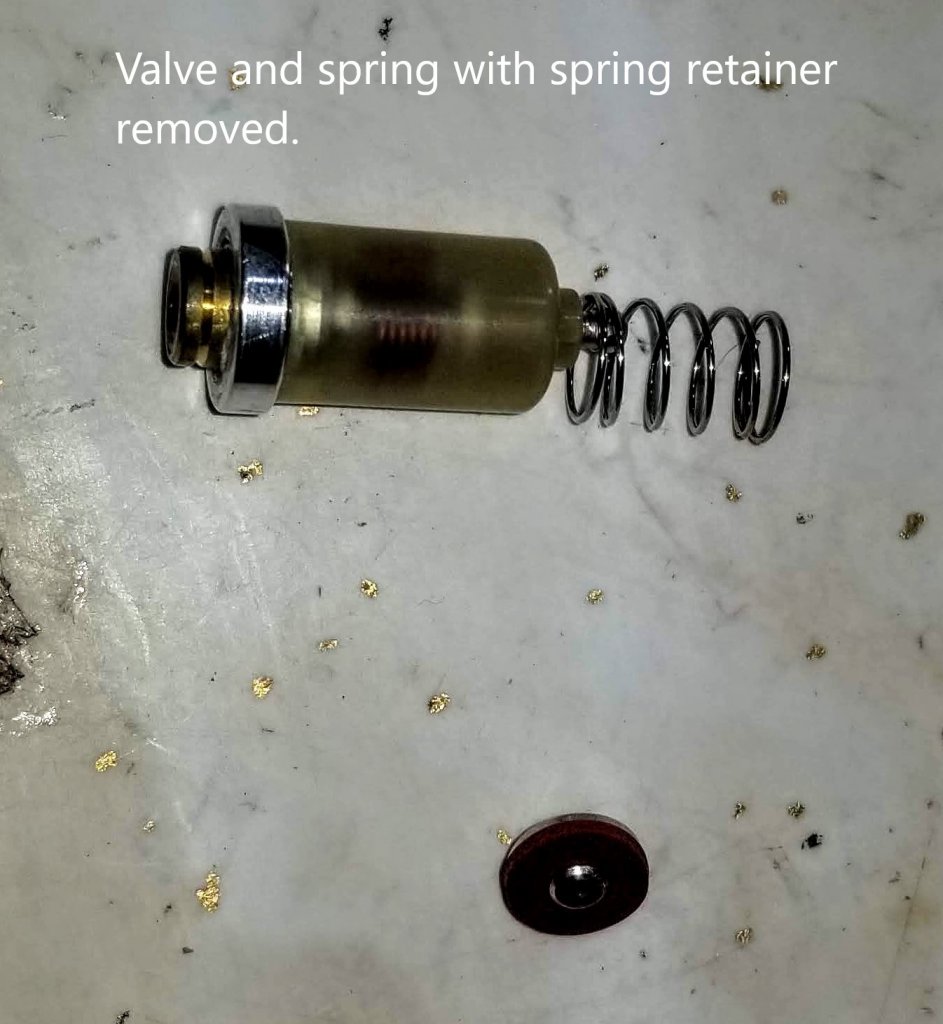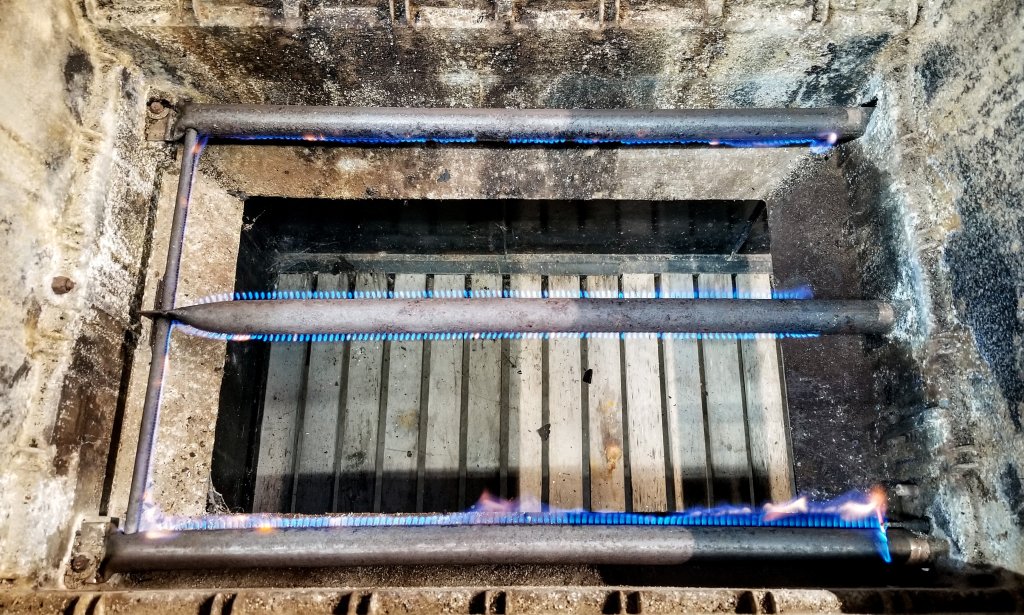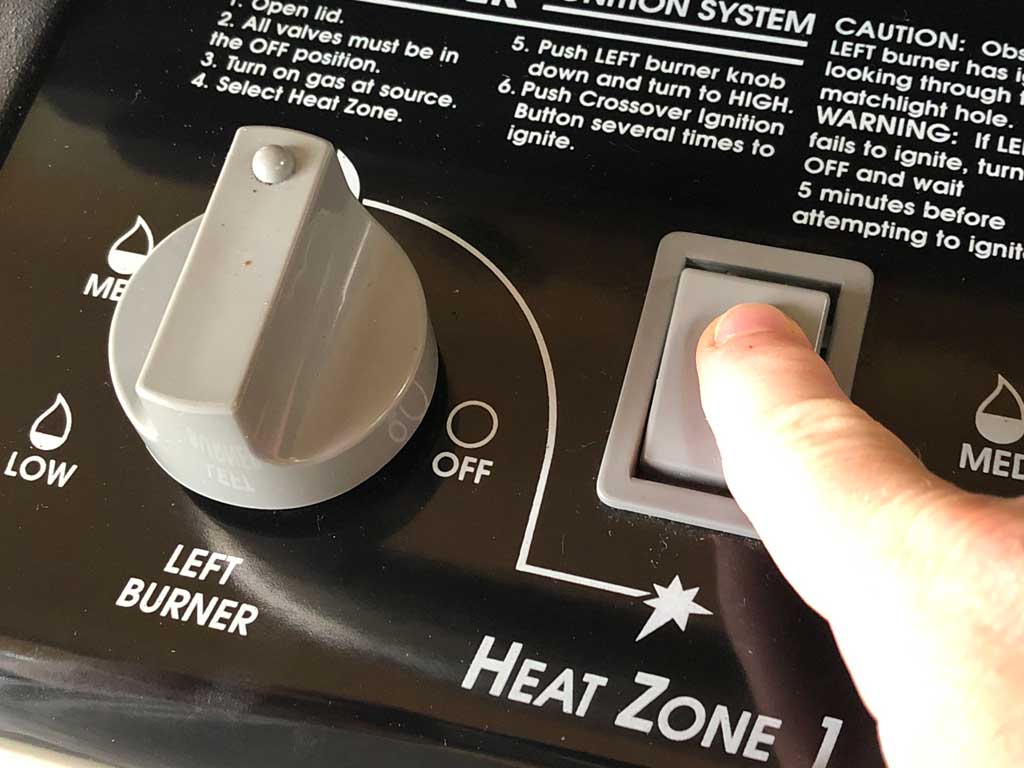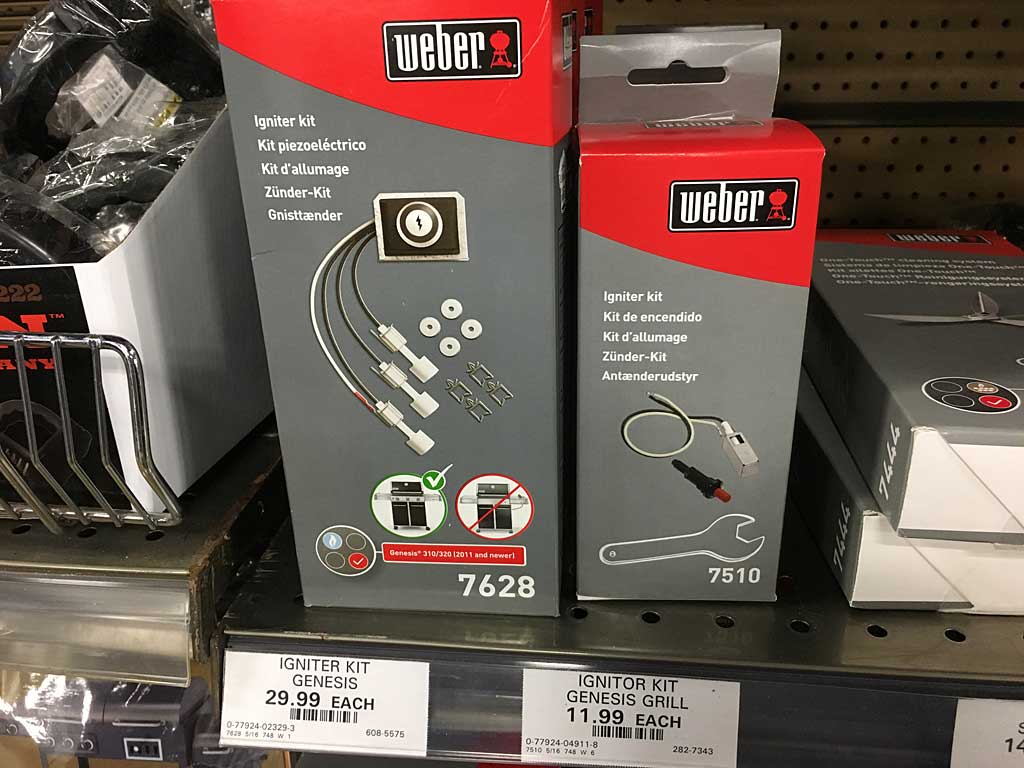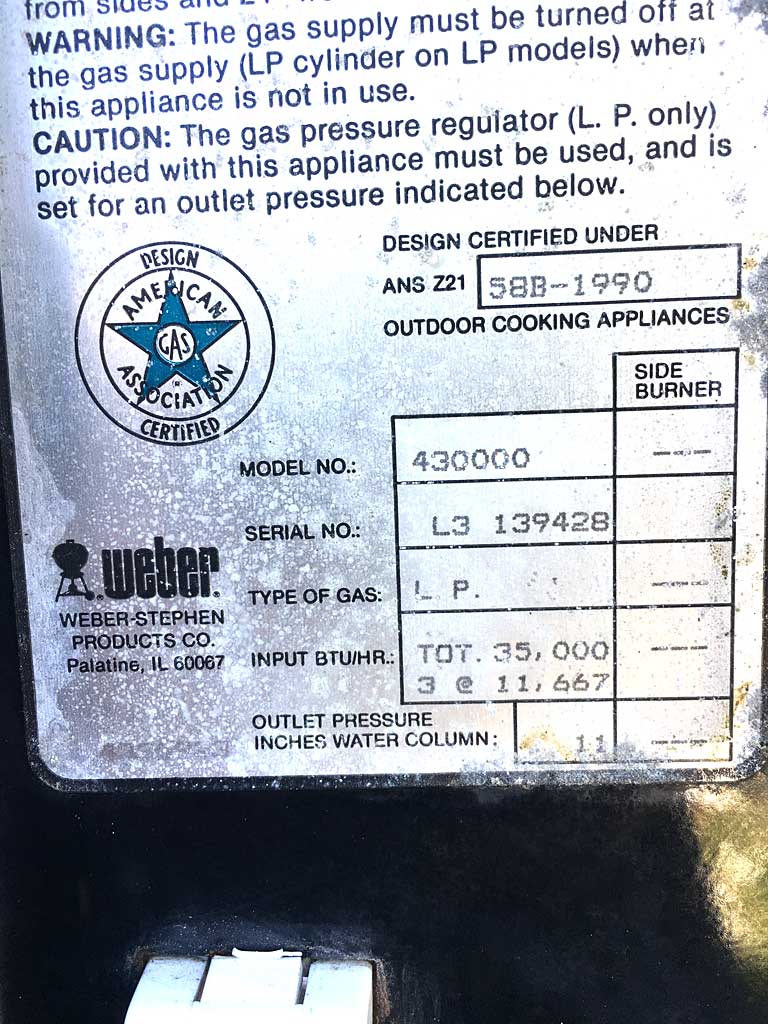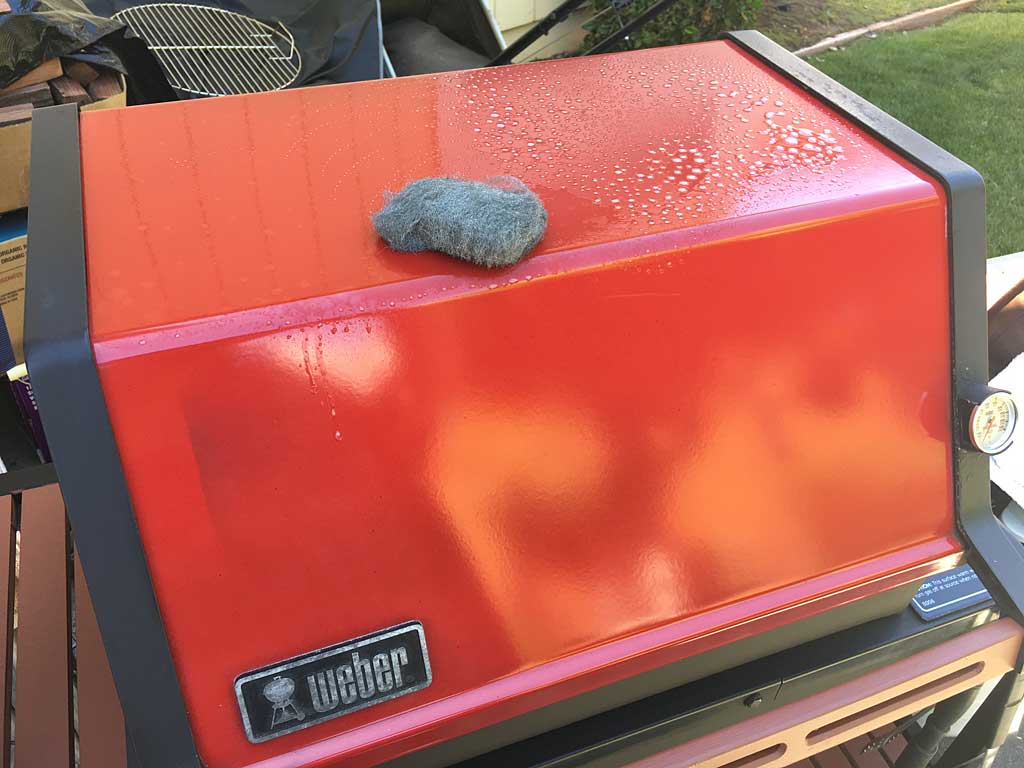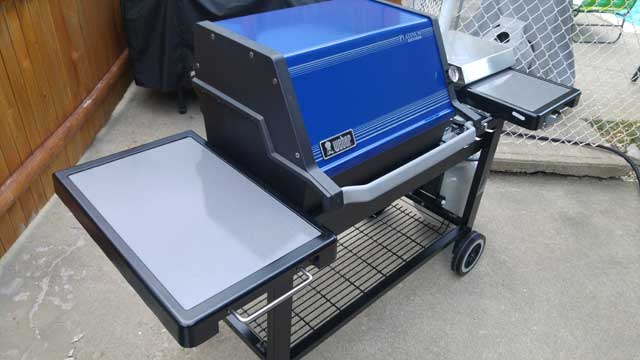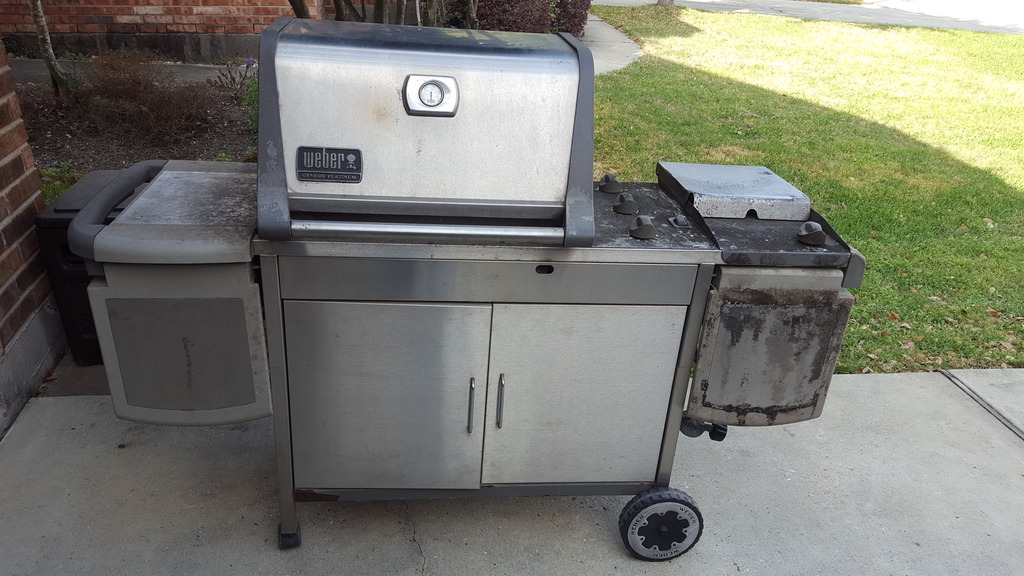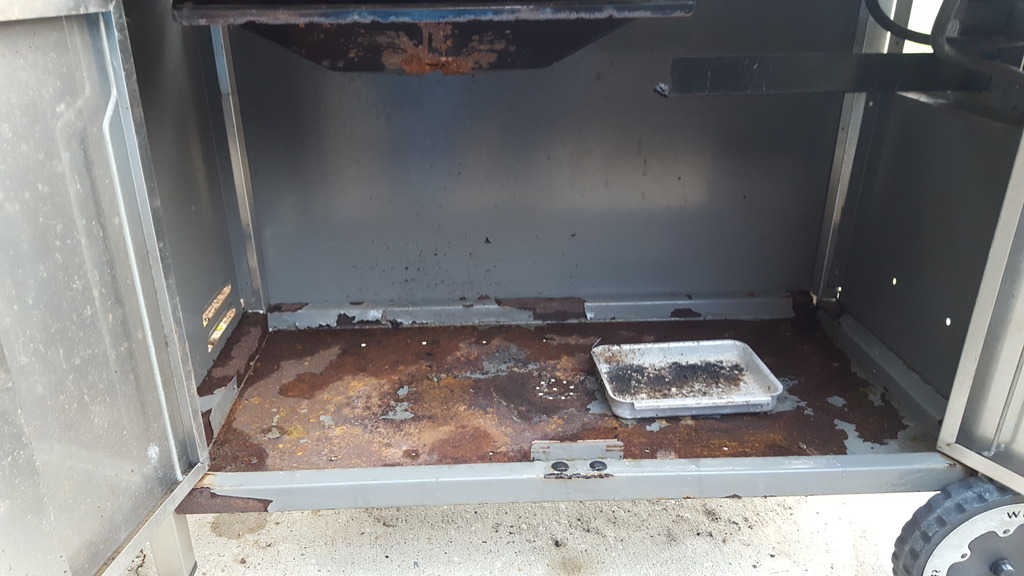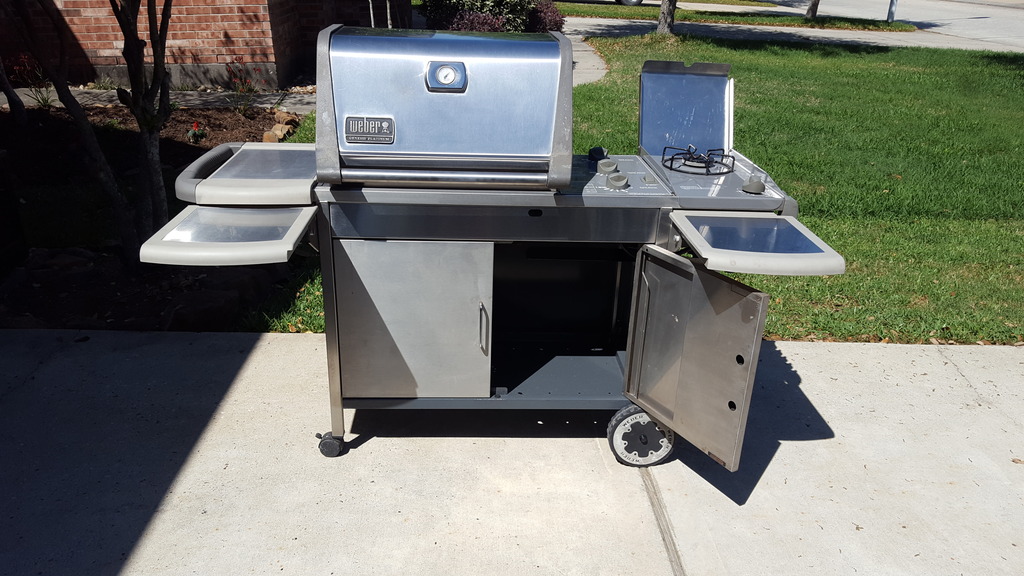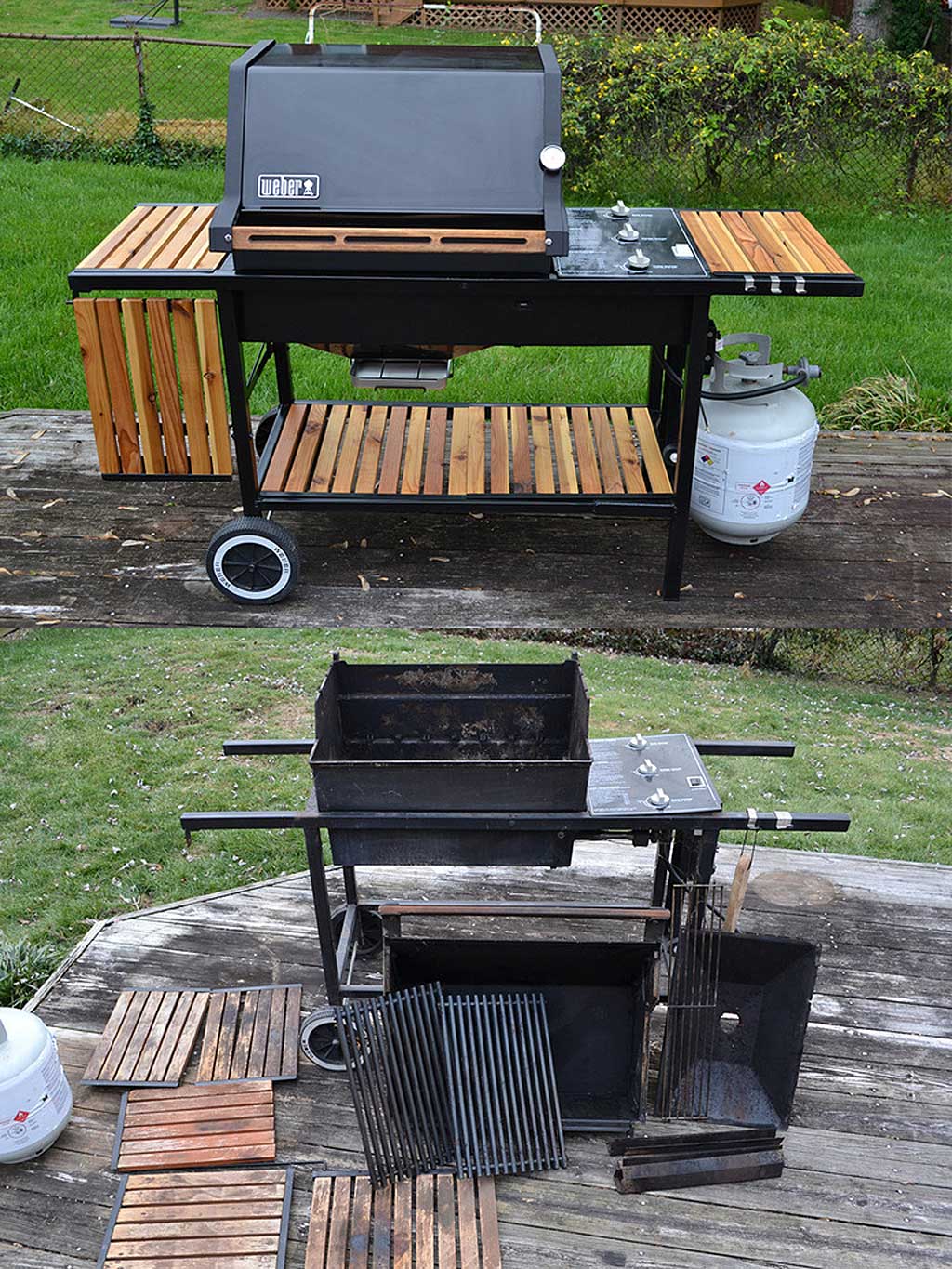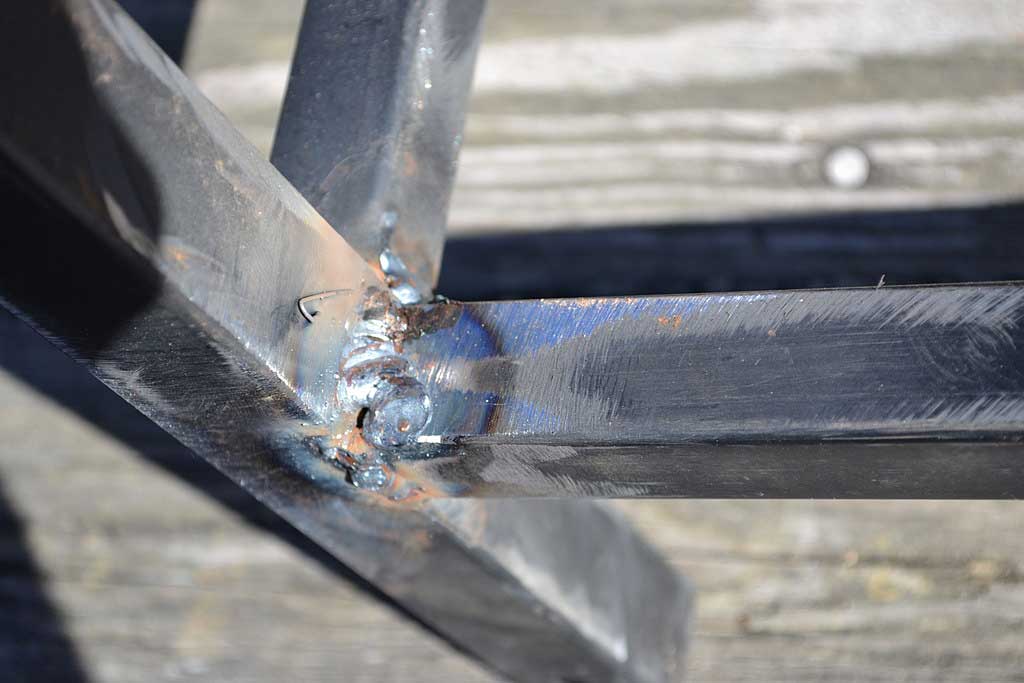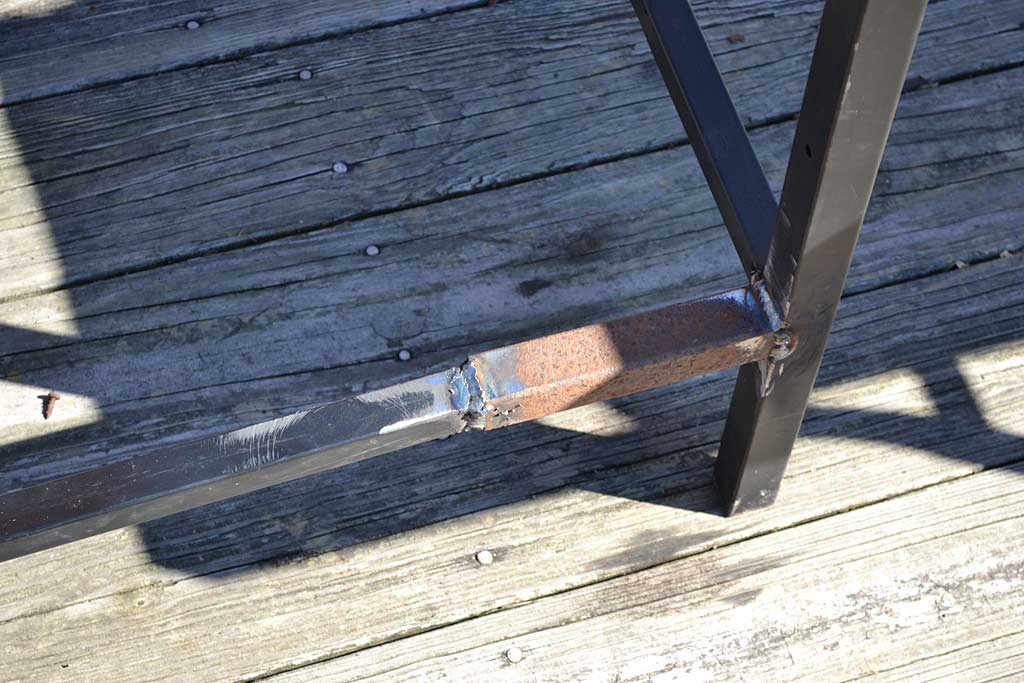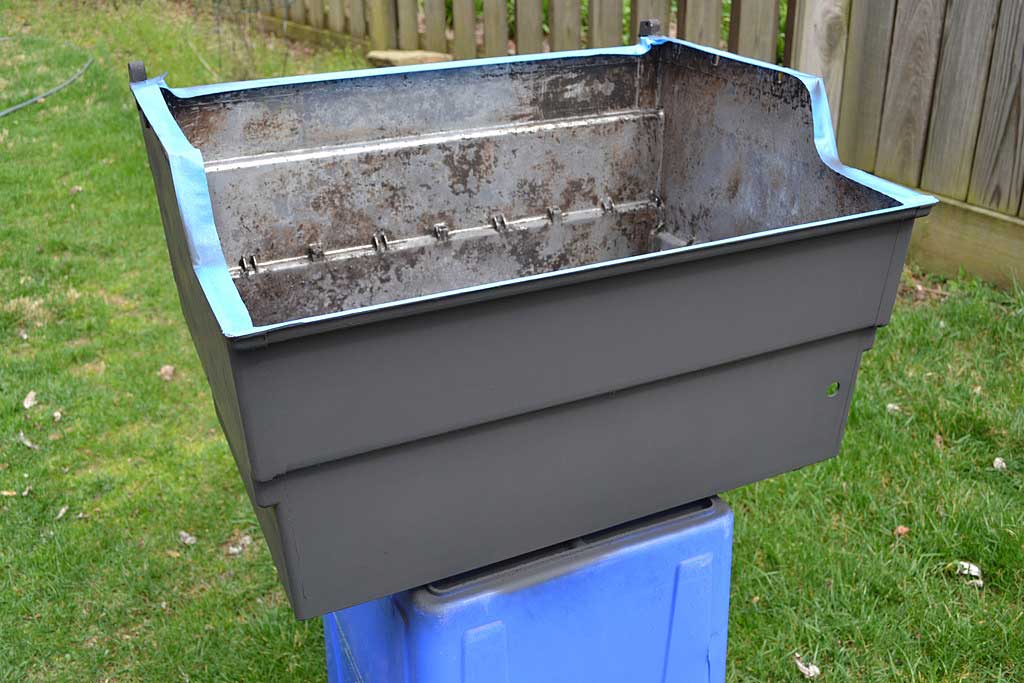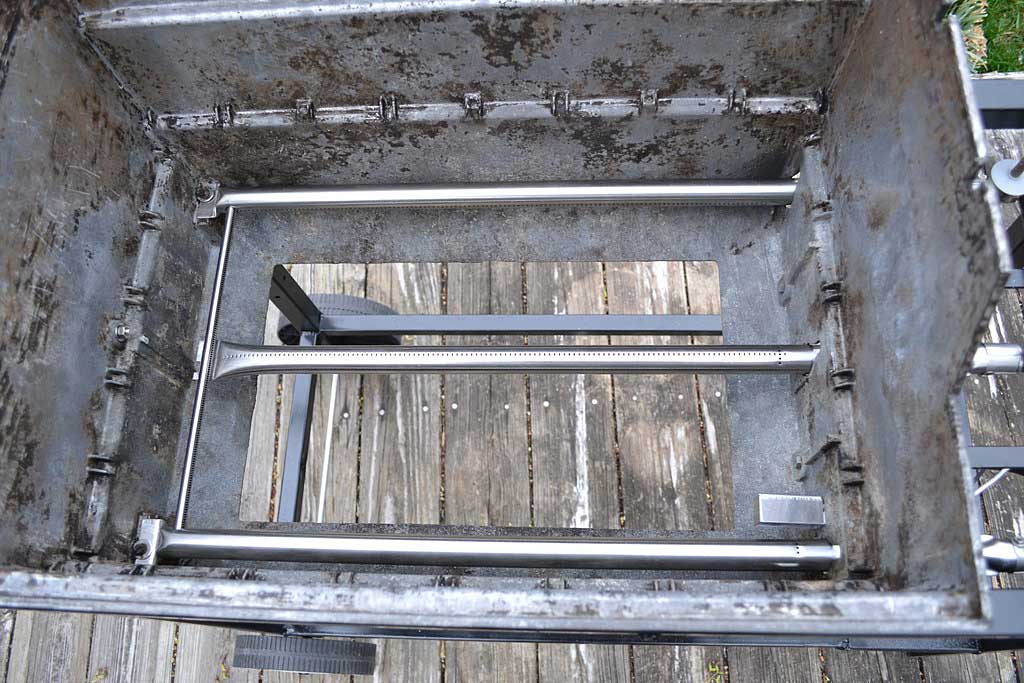Background On The FlameCheck Safety System
This is an obscure topic that applies only to people with Genesis gas grills featuring the FlameCheck Safety System. These grills include:
- Genesis 4 and 5
- Genesis 4000 and 5000
- Some Genesis models sold outside the United States
As described in this post from August 2018, FlameCheck was a safety feature on some Genesis gas grills that monitored the flame on the #1 burner. If the flame went out for whatever reason, a thermocouple-controlled valve would close, cutting off gas to the manifold. In order to initially light the #1 burner, you had to hold down a spring-loaded safety button while depressing the igniter button.
With time, the thermocouple would fail, causing the valve to stay in the closed position and shutting off gas to the grill. At some point, Weber stopped selling a replacement thermocouple, so owners of these grills resorted to placing a brick over the FlameCheck button to hold it down to keep gas flowing to the burners!
A Workaround To A Broken FlameCheck
Joe Anshien, a member of The Virtual Weber Bulletin Board, restored a Genesis 5 and shared his workaround to a broken FlameCheck Safety System that does not involve the use of a brick!
Find the FlameCheck valve situated between the incoming gas supply hose and the manifold. Unscrew the bottom portion of the valve where the thermocouple wire is connected. Inside you’ll find a valve cartridge with a spring assembly on one end.
Using a pair of pliers, pop-off the spring assembly, then remove and discard the spring retainer at the end of the spring.
Replace the cartridge and spring inside the valve and screw the bottom portion back on. Spray a soapy water solution on the valve to check for gas leaks, then check that the burners light without depressing the FlameCheck button.
Got An Obscure Restoration Question? TVWBB.com Is Ready To Help!
We’ve got lots of members who are knowledgeable in vintage Weber gas grill restoration and know how to answer even the most difficult questions. Please visit at tvwbb.com!
Valve Photos: 2021 by Joe Anschien

